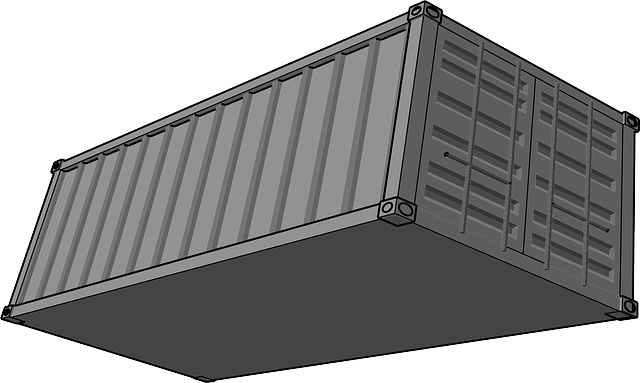Fleet managers face the complex task of managing risks associated with multiple commercial vehicles by understanding and selecting suitable multi-truck liability policies (MTLPs). They should analyze operational needs, risk profiles, and historical data to tailor policies that maximize protection and minimize costs. By integrating risk assessments with telematics insights, managers can proactively optimize coverage options like MTLPs, enhancing safety and streamlining operations while balancing budget constraints.
Empowering fleet managers with knowledge is key to navigating the complex landscape of insurance decisions. This comprehensive guide delves into the intricacies of multi-truck liability policies, offering a strategic approach for managing risks and optimizing costs. By understanding key factors and exploring real-world case studies, fleet managers can make informed choices that protect their businesses and drivers. Discover best practices for continuous risk management and learn how to choose the right multi-truck liability policies to ensure a secure future.
Understanding Multi-Truck Liability Policies: A Comprehensive Guide for Fleet Managers

Fleet managers are often tasked with navigating complex insurance landscapes to ensure their operations remain protected. One crucial aspect of this is understanding multi-truck liability policies. These specialized coverage options are designed to address the unique risks faced by companies managing multiple commercial vehicles. By delving into the intricacies of these policies, fleet managers can make informed decisions that mitigate potential liabilities and safeguard their businesses.
A comprehensive guide on multi-truck liability policies should cover key elements such as policy structures, coverage limits, and specific clauses relevant to fleet operations. It’s essential to grasp how these policies handle scenarios involving multiple vehicles, drivers, and third-party individuals. This knowledge equips managers with the tools to choose policies that align with their fleet’s size, usage patterns, and risk profiles, ultimately fostering a culture of safety and accountability on the road.
Key Factors to Consider When Choosing the Right Coverage

When selecting a multi-truck liability policy, fleet managers should start by assessing their specific operational needs and risk profile. Key factors include the type and size of their vehicle fleet, common routes and driving conditions, driver safety records, and historical claims data. Understanding these aspects helps identify potential gaps or overlaps in coverage required for each truck, ensuring a tailored policy that maximizes protection while optimizing costs.
Additionally, managers must consider regulatory requirements and legal landscape specific to their industry and region. Changes in legislation can significantly impact liability insurance needs, necessitating regular reviews of current policies. Staying informed about evolving standards ensures compliance and minimizes exposure to financial risks associated with accidents or legal disputes involving fleet vehicles.
Case Studies: Success Stories of Informed Insurance Decisions

Informed insurance decisions can be a game-changer for fleet managers, leading to significant cost savings and enhanced operational efficiency. Case studies from various industries highlight the success of implementing multi-truck liability policies (MTLPs). These policies are designed to provide comprehensive coverage for fleets with multiple vehicles, addressing unique risks associated with diverse operations. By analyzing real-world scenarios, fleet managers can witness firsthand how MTLPs mitigate financial exposure and streamline risk management processes.
One such case involves a logistics company managing a vast fleet of trucks across different routes. Through strategic insurance planning, they opted for an MTLP that catered to their specific needs. The policy’s flexibility allowed them to customize coverage limits and deductibles based on vehicle types and usage patterns. As a result, the company experienced a notable reduction in overall liability claims and premium expenses. This success story emphasizes the value of data-driven decisions in insurance selection, ultimately empowering fleet managers to navigate the complex landscape of liability coverage with confidence.
Best Practices for Continuous Risk Management and Cost Optimization

To ensure continuous risk management and cost optimization, fleet managers should adopt a proactive approach that combines regular risk assessments with data-driven insights. This involves tracking vehicle performance, driver behavior, and environmental factors to identify potential hazards and cost drivers. Implementing advanced telematics solutions can provide real-time data on fuel efficiency, maintenance needs, and safety metrics, enabling managers to make informed decisions tailored to their fleet’s unique profile.
One key strategy is diversifying insurance coverage options, such as exploring multi-truck liability policies that offer broader protection for fleets with multiple vehicles. Additionally, regular reviews of insurance policies and claims history can help identify areas where costs can be reduced without compromising coverage. By staying agile and informed, fleet managers can balance risk mitigation and budget constraints, ultimately optimizing their operations and securing their assets effectively.
Empowering fleet managers with knowledge is a game-changer in the world of insurance. By understanding multi-truck liability policies, considering key factors, learning from case studies, and adopting best practices, fleet managers can make informed decisions that optimize risk management and costs. In today’s digital era, navigating these strategies enables professionals to ensure their fleets are protected while fostering efficient operations.
